2025 Acura ZDX First Drive Review: First electric Acura or alternative Cadillac?

MONTECITO, Calif. – The 2025 Acura ZDX not only looks like an Acura, but it’s arguably one of the best-looking Acuras ever. If we’re talking SUVs, what’s going to topple it from the podium? The original ZDX? Beneath that skin, however, it’s no secret that the new ZDX rides on General Motors’ Ultium electric platform, has an interior constructed with General Motors parts, and is even built by General Motors in Tennessee. Ultimately, though, the most GM thing about the ZDX may be this overall assessment of it: This electric SUV provides more performance and features for the money than competitors, but the interior is a real letdown. Sure sounds like any performance Cadillac from the past two decades to me.
The trouble for the ZDX is that the competitor it most closely aligns with in terms of price, feature content and EV specs is literally a Cadillac … but things have changed. Specifically, the Cadillac Lyriq doesn’t suffer from that whole “interior is a real letdown” thing. Far from it, it’s a reason to buy a Lyriq. Furthermore, the two EVs not only share the same Ultium platform, but their motor offerings are basically the same with power outputs and ranges that closely align. It’s therefore impossible not to keep coming back to comparisons between the two. Even if the ZDX is a decent value, complete with its $7,500 federal tax credit, why get one instead of the more luxurious Lyriq? In short, it comes with even more features for the money, and boasts the sort of chassis upgrades and handling acumen Cadillac has moved away from with the Lyriq.
So that’s where that comparison rests, and although I’ll get back into that whole “not really an Acura” angle, let’s take a closer look at the specs that more objectively let the new ZDX stack up well to vehicles that aren’t mechanically related. There are three versions of the ZDX, with no options apart from color and a summer-tire option. Starting at $65,850, including destination but not the federal tax credit, the base ZDX A-Spec becomes the only other rear-wheel-drive Acura besides the first NSX. It produces 358 horsepower and 324 pound-feet of torque, and achieves an EPA-estimated range of 313 miles from its 102-kilwatt-hour battery pack. These specs are roughly equal to the rear-motor Lyriq and Chevy Blazer EV, but they amount to a stronger proposition than anything offered by Hyundai/Kia/Genesis, while comparable luxury models are considerably more expensive. The same conclusion can be made with the dual-motor A-Spec, which gains a front motor, and a grand total of 490 hp and 437 lb-ft of torque. Range is still 304 miles. That performance falls just shy of the dual-motor Lyriq, but here comes Acura’s ace in the hole: the ZDX Type S.
It boasts 499 horsepower (you might see 500 horses written places, but the official spec is 499) and a Lyriq-smoking 544 lb-ft. Its range falls to 278 miles, but that’s still far better than the majority of electric vehicles, let alone high-performance ones. The 429-hp Genesis GV60 Performance can only eke out 235.
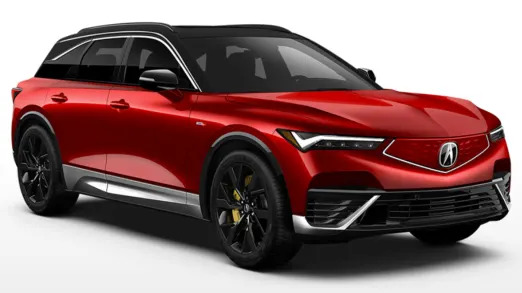
Acura ZDX A-Spec vs ZDX Type S
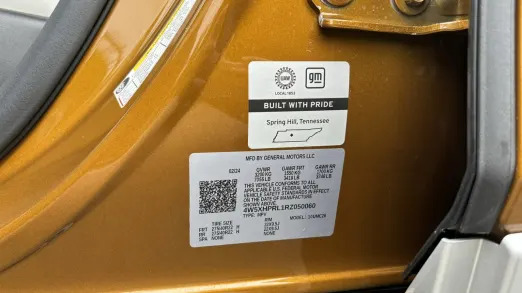
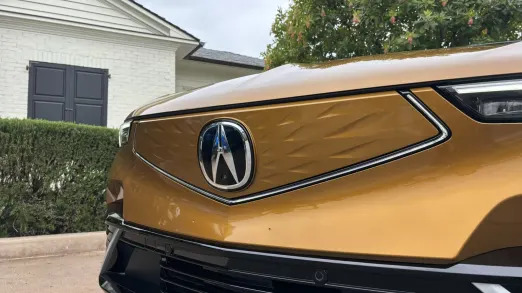
The maximum DC fast-charging rate is 190 kilowatts, which is quick but ultimately average, especially in the luxury realm. Acura also includes a choice of three charging packages: a home charging station, $500 installation credit and $100 public charging credit; a Level 1 and 2 portable charger, a $250 installation credit (for a 240-volt outlet) and $300 public charging credit; or you could get $750 worth of waiting around at Electrify America. We wouldn’t recommend that last one unless you already have a home charger.
While discussion of its GM DNA is unavoidable, this isn’t a badge-swapped SLX for the electric age. According to John Hwang, development leader for both ZDX and Honda Prologue, a team of Ohio-based Acura engineers were dispatched to GM’s Milford proving grounds to work on tuning the ZDX to their own specifications. They also worked separately from the Prologue team (Hwang wanted the two cars to have their own unique characters) and I would argue Acura was far more successful at working with GM’s componentry. Hwang said the ZDX team brought an MDX to Milford to provide a baseline reference on literal common ground, while GM had component suppliers on hand who could swap out hardware and change software-based tuning on the spot after engineers completed test runs. Engineers also tested at Honda’s own facility in Ohio, including on a laser-scanned copy of Harper’s Way, a uniquely and notoriously bad road outside Honda HQ in Torrance, Calif., that’s a must-do for any North American Honda or Acura.
Great, but did they succeed? Well, an EV will always perform inherently different than a gas-powered vehicle from the same brand. Even a Porsche Taycan won’t be mistaken for a Panamera, for better or worse. There’s also the matter of the Acura brand being inconsistent and ill-defined for the better part of 15 years, so it’s much harder to nail down expectations for it than it was for the Honda Prologue (which missed the mark). So, no, it probably doesn’t “drive like an Acura,” but I’m not sure what that means these days.
What I do know is acceleration is just as vigorous as you’d expect from the 499 horses provided by the Type S, which was unfortunately the only version on hand to test. It smacks you in the chest in a way that an MDX certainly won’t. Like other EVs, artificial noises are piped through the sound system, but they’re better than most. More noise emanates from the rear, in keeping with more power literally coming from the rear. The Taycan and Mustang Mach-E GT do the same thing, with a similarly positive effect. The ZDX, however, goes one step further by adding noise under harder braking. Though subtle, it clearly comes from the forward speakers, thereby emulating off-throttle engine braking noises. It’s a cool touch that seems natural and adds to the experience.
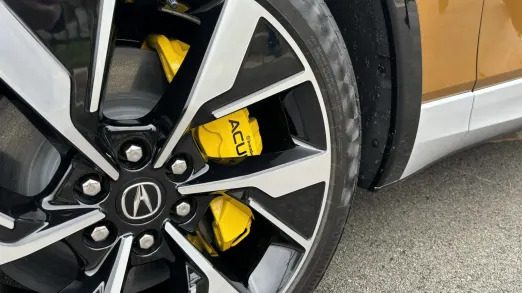
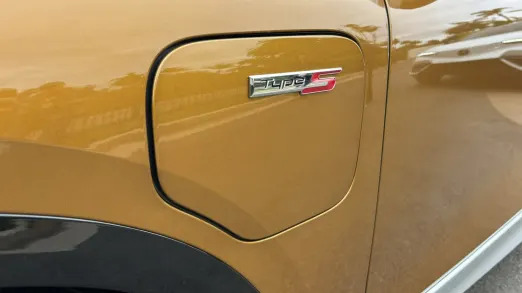
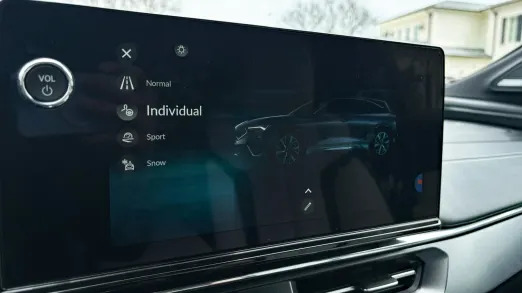
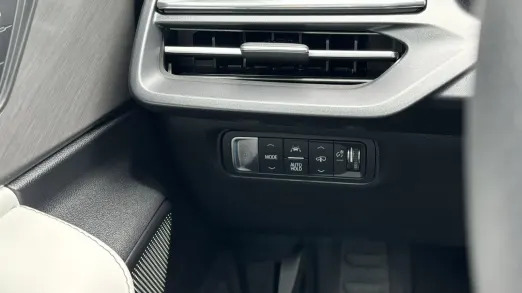
While the ZDX A-Spec includes adaptive dampers not available on the Lyriq, the Type S also uniquely gets a height-adjustable air suspension and Brembo brakes (22-inch wheels, too, though those are a Lyriq option). The result is an EV that doesn’t quite give you the feels, but that impresses with road-holding you won’t find on anything else in the price realm except maybe the Ioniq 5 N and EV6 GT. I’ve driven neither, but given the suspension hardware, I’d bet good money the smooth-riding ZDX is more comfortable when set in its Normal mode.
In Sport mode, the dampers firm up, and the suspension automatically lowers by 0.59 inches. It’s surprising how much the latter makes a difference, which you can detect since the car’s Individual mode lets you pair the Sport damping setting with the standard height (Snow mode raises the car by an inch). Bumps are more felt with the lowered suspension, versus just the firmer dampers, meaning you’ll really only use it when attacking some extra-winding road. When doing some attacking myself, I ending up using the Individual mode to swap out of the Sport steering setting – it adds too much effort, muddying road feel. Ultimately, Normal mode’s various attributes are well-tuned enough that I don’t see much reason to futz about with them.
Which is good because changing the drive modes is a pain. No, not because they’re buried in a touchscreen, but because the “MODE” toggle button is buried down by your left knee (pictured above right) next to buttons for suspension height adjustment, Auto Hold, lane-keeping and the parking brake. They’re an afterthought, and frankly, that’s a decent way to summarize the entire cabin.
But first, some kind words. I like the design, for aesthetic reasons and because the low dash scooped out from below the hood line and pod-like instrument cowl make the cabin feel more open. The dual 11-inch screens for the instruments and infotainment system are obviously not as impressive as the Lyriq’s 33-inch curved uni-display, but the touchscreen in particular looks good, works well, and isn’t so different than what you’ll find in the 2025 MDX (the instruments could use more visual pizzazz, though, and seem like the one thing that could easily mimic the look of an Acura but don’t). There’s also a kicking 19-speaker Bang & Olufsen sound system standard along with leather upholstery, a heated steering wheel and a panoramic sunroof. Base Lyriqs have a seven-speaker no-name stereo and none of that other stuff.
The problem is materials quality. I’m not sure which GM parts bin Acura gained access to, but it certainly wasn’t found in the luxury aisle. The gray plastic dash trim looks and feels like gray plastic. The leather may be from a cow, but it’s rubbery, and I fear the white color option will quickly sop up blue jean dye and every bit of crud it comes in contact with (at least get red or black). The climate controls are operated with chintzy, glossy black buttons that smudge with fingerprints easily and knobs that look like they’re made out of recycled aluminum pie plates … except that would mean they are made of real metal, when in reality, they are very obviously plastic. I can’t believe I’m writing this, but touchscreen controls would be better. My first thought was that the ZDX interior was more akin to previous-gen Cadillacs like the CT4 than the high-style, higher-quality Lyriq, but no. I double-checked and the difference in switchgear with a CT4 is obvious and stark.
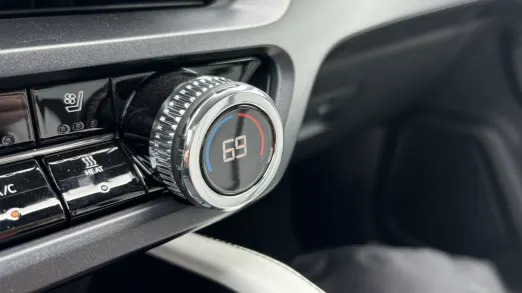

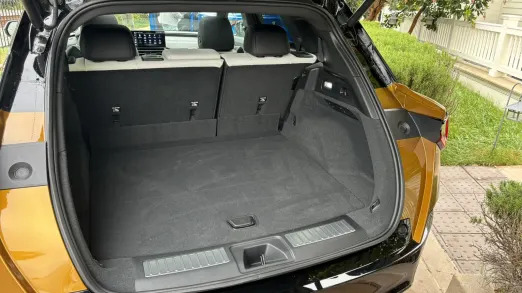
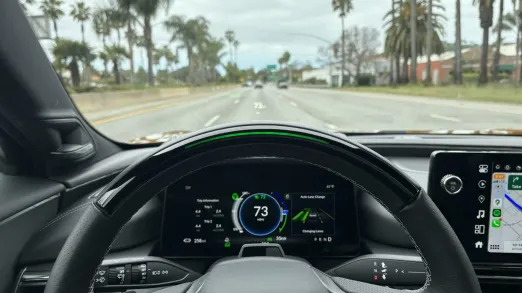
Perhaps GM simply “withheld the good stuff,” or at least the good stuff from five years ago, but either way, the ZDX interior is a big-time letdown. The good news is that while its interior quality is lower than that of other Acuras and the similarly priced Lyriq, more favorable comparisons can be made to upper trim levels of EVs from mainstream brands. It’s also a palace compared to what you’ll find in the admittedly much cheaper Tesla Model Y. Against those, it also has similarly vast back seat space (including more headroom under its panoramic sunroof than its Prologue and Blazer EV platform-mates) and a notably lengthy cargo space that I anticipate being a bit better than most EV crossovers at hauling luggage. The official figures are 29.7 cubic feet for A-Spec and 28.7 for Type-S.
I’ve also yet to mention a rather noteworthy trinket Acura plucked from the parts bin: The Type S comes standard with Super Cruise. Acura isn’t calling it that, but even when dubbed “Hands Free Cruise,” it still behaves just as intelligently on pre-mapped stretches of controlled-access highway while making sure you’re paying attention. Although an option on lower Lyriq trim levels, including single-motor ones, you can’t get Don’t Call It Super Cruise on the A-Spec. That’s a shame. On the upside, the Type S price of $74,850 is about $4,000 cheaper than the similarly equipped Lyriq Sport 3 trim level that, again, does not offer the Type S chassis upgrades.
If it seems like I’m conflicted about the 2025 Acura ZDX, it’s because I am. The Lyriq comparison hurts it since I’m pretty sure more people will value the Cadillac’s much nicer interior than the Acura’s chassis upgrades. When you factor in the federal tax credit, however, both are screaming bargains compared to the cast of underwhelming, outgunned and/or smaller luxury EVs with which they compete on price: Mercedes EQB, Lexus RZ, Volvo C40 and the GV60 and Electrified GV70 from Genesis. They also look great, in unique ways very much in keeping with their respective brands. Maybe all this makes the ZDX more like the best sort of Pontiac than an Acura, but either way, there’s a case to be made.




